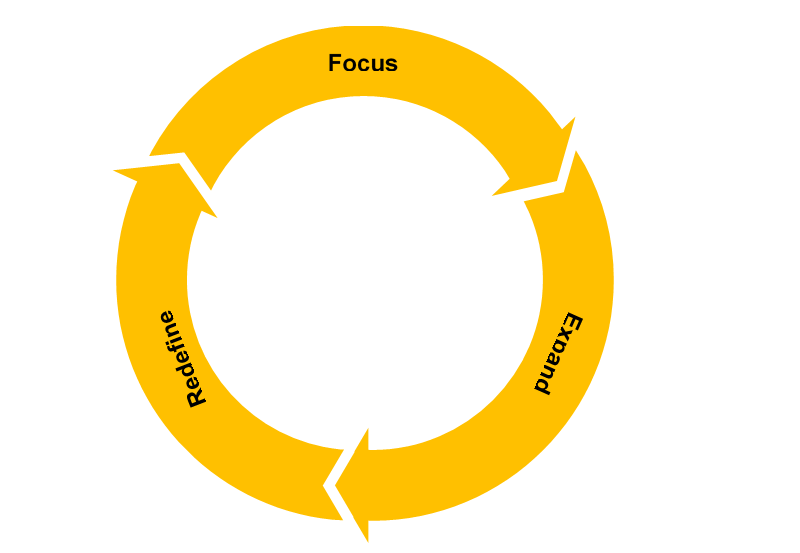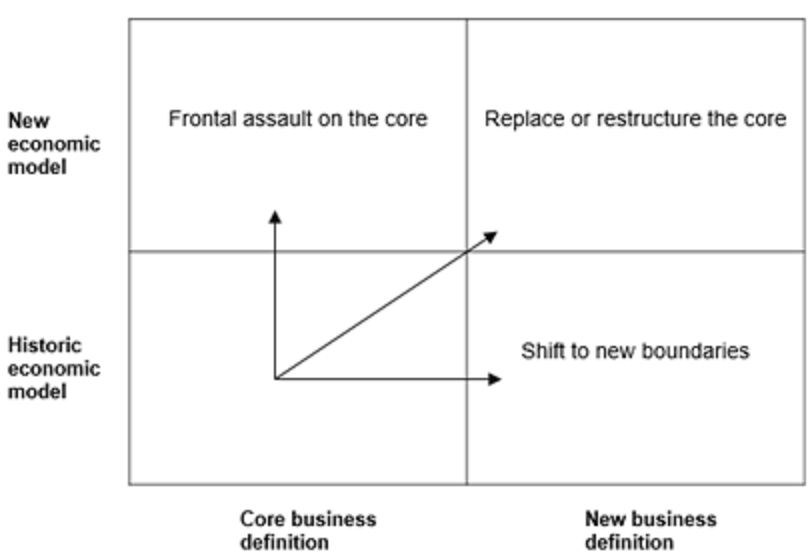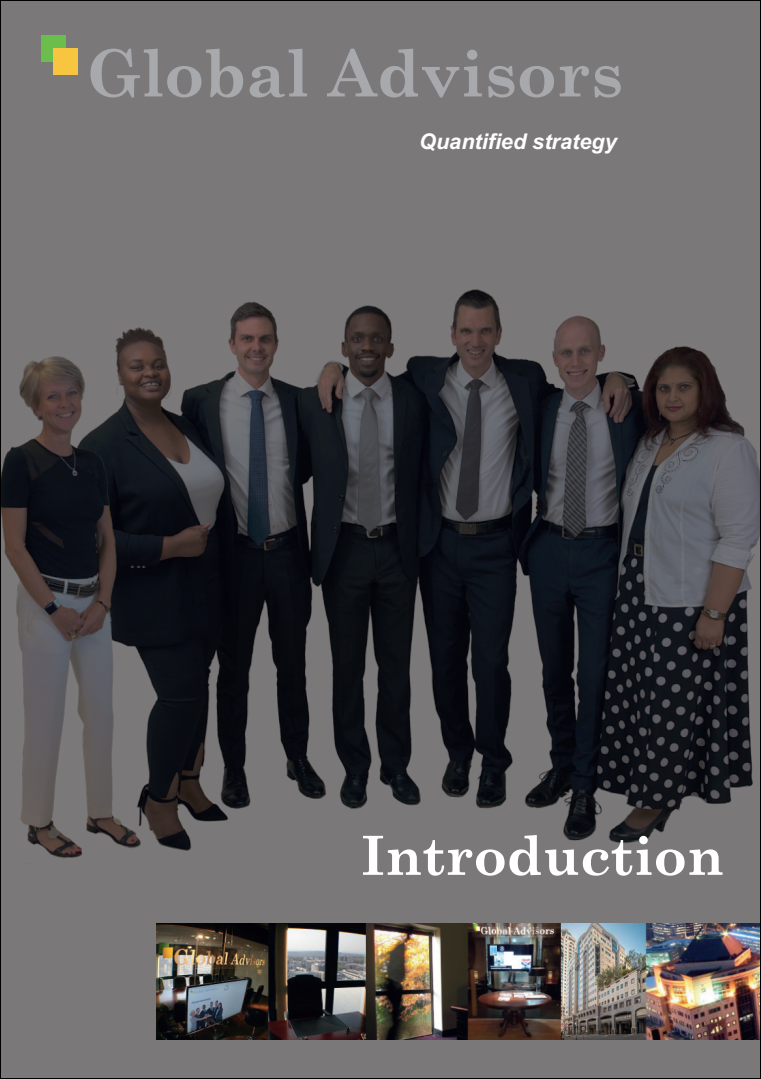Extensive research conducted by Chris Zook and James Allen has shown that many companies have failed to deliver on their growth strategies because they have strayed too far from their core business. Successful companies operate in areas where they have established the “right to win”. The core business is that set of products, capabilities, customers, channels and geographies that maximises their ability to build a right to win. The pursuit of growth in new and exciting often leads companies into products, customers, geographies and channels that are distant from the core. Not only do the non-core areas of the business often suffer in their own right, they distract management from the core business.
Profit from the Core is a back-to-basics strategy which says that developing a strong, well-defined core is the foundation of sustainable, profitable growth. Any new growth should leverage and strengthen the core.
Management following the core methodology should evaluate and prioritise growth along three cyclical steps:
Focus – reach full potential in the core
- Define the core boundaries
- Strengthen core differentiation at the customer
- Drive for superior cost economics
- Mine full potential operating profit from the core
- Discourage competitive investment in the core
For some companies the definition of the core will be obvious, while for others much debate will be required. Executives can ask directive questions to guide the discussion:
- What are the business’ natural economic boundaries defined by customer needs and basic economics?
- What products, customers, channels and competitors do these boundaries encompass?
- What are the core skills and assets needed to compete effectively within that competitive arena?
- What is the core business as defined by those customers, products, technologies and channels through which the company can earn a return today and compete effectively with current resources?
- What is the key differentiating factor that makes the company unique to its core customers?
- What are the adjacent areas around the core?
- Are the definitions of the business and industry likely to shift resulting in a change of the competitive and customer landscape?
Expand – grow through adjacencies
- Protect and extend strengths
- Expand into related adjacencies
- Push the core boundaries out
- Pursue a repeatable growth formula
Companies should expand in a measured basis, pursuing growth opportunities in immediate and sensible adjacencies to the core. A useful tool for evaluating opportunities is the adjacency map, which is constructed by identifying the key core descriptors and mapping opportunities based on their proximity to the core along each descriptor. An example adjacency map is presented below:
Redefine – evaluate if the core definition should be changed
- Pursue profit pools of the future
- Redefine around new and robust differentiation
- Strengthen the operating platform before redefining strategy
- Fully value the power of leadership economics
- Invest heavily in new capabilities
Executives should ask guiding questions to determine whether the core definition is still relevant.
- Is the core business confronted with a radically improved business model for servicing its customers’ needs?
- Are the original boundaries and structure of the core business changing in complicated ways?
- Is there significant turbulence in the industry that may result in the current core definition becoming redundant?
The questions can help identify whether the company should redefine their core and if so, what type of redefinition is required:
The core methodology should be followed and reviewed on an on-going basis. Management must perform the difficult balancing act of ensuring they are constantly striving to grow and reach full potential within the core, looking for new adjacencies which strengthen and leverage the core and being alert and ready for the possibility of redefining the core.
Source: 1 Zook, C – 2001 – “Profit From The Core” – Cambridge, M.A. – Harvard Business School Press
2 Van den Berg, G; Pietersma, P – 2014 – “25 need-to-know strategy tools” – Harlow – FT Publishing




